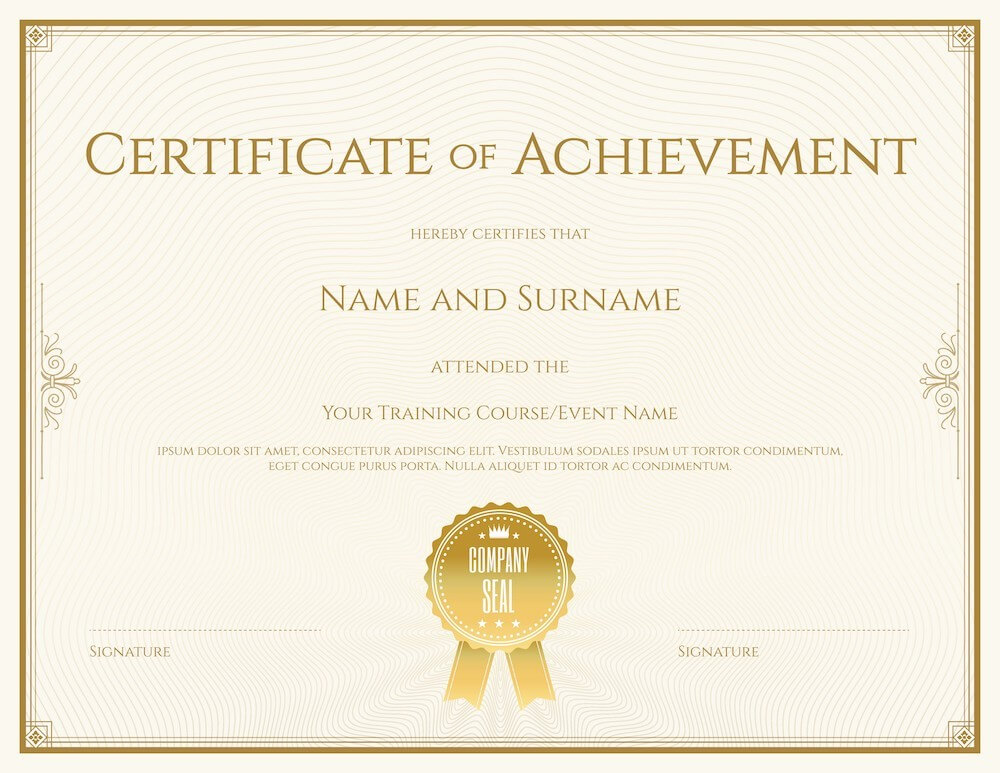Certification is:
- a standardized method with a formal process
- that individuals use to demonstrate that they are qualified at a specific level in particular knowledge or skills.
- Hiring managers use certifications to identify candidates that possess the skills the organization needs.
- Project managers use certifications to reinforce that potential partners employ people with those skills.
- With respect to products, certification means that the product meets a particular standard.
People are increasingly posting that they (or their products) have been recently received a certificate in some accessibility-related topic. Even more so, people from outside of the United States are posting certificates as “proof” that their skill sets include an understanding of American accessibility requirements. These posts are frequently followed by congratulatory messages by people who don’t really understand what the certificate means or what work it entailed.

Certifications that actually mean something
Real certifications have:
- accessible examinations that people with disabilities can take in a manner equal to those without disabilities.
- exams that are constructed by people with training in survey and examination science that are Beta tested and have evolved. This includes figuring out the pass/fail line, randomizing the questions, and rotating in new questions.
- expiration dates.
- a renewal process that typically involves continuing education requirements or some accumulated hours working in the field.
- are “owned” by the certifying body, not the person who got certified. That allows the certifying body to revoke a certificate if the individual has not met a set of conduct, ethics, or legal requirements set by the certifying body. This frequently includes cheating on the exam, falsifying other certification requirements, or conduct detrimental to the certifying organization or industry.
Real certifications also take a substantial amount of time to prepare for, even if someone already possesses knowledge in the field being certified. Valid accessibility-related certifications include:
- Anything from IAAP (CPACC, WAS, CPWA, CPABE, ADS) — disclaimer, I am on the IAAP Global Leadership Council. But I know from actual participation on certification committees that IAAP does everything in the list above.
- Trusted Tester v5 from the US Federal Government
- ACTCP (ADA Coordinator Training Certification Program) from the University of Missouri, Columbia. Note: It is possible to receive ACTCP certification without knowing a lot about digital accessibility. Digital accessibility is a path that can be taken by elective.
Certifications that are not worth the paper they are printed on
Please do not confuse the Trusted Tester v5 program, which took me 120 hours to complete with any of the other recently released Trusted Tester accessible documentation training. Recently, I have seen a SLEW of people posting how proud they are to have completed one of four new Trusted Tester programs focusing on document accessibility, including:
- Authoring Accessible Microsoft Office Word Documents
- Authoring Accessible PDF Documents
- Authoring Accessible Microsoft Office PowerPoint Documents
- Authoring Accessible Microsoft Excel Documents
Certificates associated with these courses are certificates of completion of training, nothing more. They are most emphatically NOT certificates of any level of knowledge or skills.
- None of these courses take more than an hour to complete.
- There are no exercises or exams.
- A participant can fast-forward to the end of any video to progress to the next one. The participant can finish each course in about 10 minutes if they cheat and still get the certificate.
Many product and hiring managers don’t appear to appreciate the difference between a course completion certificate and a certification of knowledge and skills when reviewing candidates’ credentials. Today, the only way to tell whether or not someone has document remediation skills is to give them a inaccessible document and ask them to produce an audit report or remediate it. This is a form of a limited accessibility job audition. Make sure you ethically conduct the audition. The IAAP ADS certification will be released to the public in early 2021.
Certifications that a software product is “ADA compliant” are no better.
- There is no definition of what constitutes “ADA compliant.” The WCAG standard has been set and enforced by courts, not the law.
- A product can be largely accessible and usable even if there are a few WCAG failures here and there.
- A product can be completely accessible and totally unusable by individuals with disabilities if usability studies have not been performed and acted on.
If they are so useless, then why do accessibility-related software compliance certificates exist?
They are nothing more than a sales technique to get people to buy services. You might be offered a certificate if:
- Your organization pays for an audit, pays to get the bugs fixed, and then pays more to get the software re-audited. Of course, the company promising product certification is the one getting the revenue.
- Your organization pays for an overlay, plugin, or widget (read this article to find out why this is a terrible idea). Then, the company that sold you the never-ending service “certifies” your software. For example, Accessibe offers an “accessibility statement and certificate of performance” What does that mean?
Nothing.
- Generic accessibility statements are worthless. Accessibility statements are not “one size fits all” because no two companies perform accessibility activities in the same way. You can generate your own accessibility statement here for free. However, I recommend reading my article about why that’s a bad idea without customization and legal review.
- What is exactly a certificate of performance? All Accessibe can “certify” is that you are using their tool. Despite claims that overlays will make your website WCAG or ADA compliant, over 100 lawsuits against companies using various overlays, widgets, and plugins tell a very different story.
- A certificate that testing has been performed is only as good as the organization that did the testing and is only good for that EXACT version of the software. Since 70 % of accessibility testing is manual, and software, especially on the cloud can be updated frequently, that creates a lot of room for variation.
Ask yourself the question: Does my organization really want to pay lawyers to defend the work that went into internal certification if an accessibility lawsuit is filed? Remember, this question has already been litigated: In Gomez v. GNC, the court not only didn’t buy GNC’s claims of accessibility training, they threw out the testimony of the head of GNC’s IT department as an expert witness.
When someone presents a certificate for either personal skills and knowledge or software compliance, hiring managers or those involved with procurement or sourcing should contact the certification-issuing organization to verify these credentials, including
- The date of issuance
- Renewal date
- That the person actually holds the credential they claim to having earned.
The most important thing is not to be misled by the word “Certified” or “Certificate” until you understand what the certification means and you have verified it with the issuing organization.
A course completion certificate is nothing more than a piece of paper that says that you have completed a course.
It is not a skills-based certification
There is no level of knowledge or skills that you can assume that the certificate holder possesses.
So what can you do with all these course completion and product accessibility certificates being issued? I hear we have another pandemic-induced toilet paper shortage coming…

0 comments on “Accessibility certifications: separating what IS good from what just sounds good”